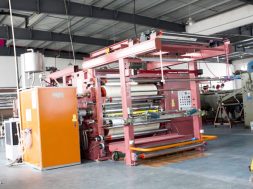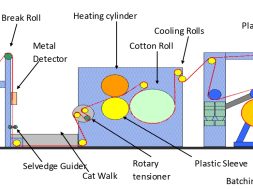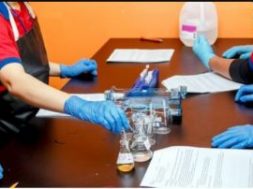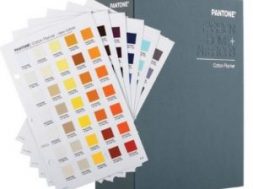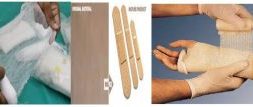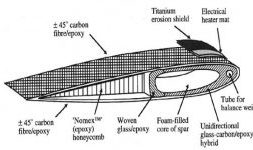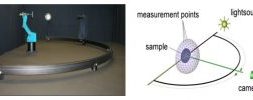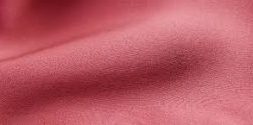Pre-treatment Before Dyeing
Pre-treatment Before Dyeing
Pre-treatment :
Pre-treatment is the called as the Heart of Dyeing. Generally, the chemicals used for scouring and bleaching cotton or CVC fabrics is the same Dosage, temperature and time are different for different type of fabric. Special cases like the yarn dyed fabrics, synthetic fiber containing fabrics, very deep shades like blacks and navy and fabrics to be OBA whitened are pre-treated differently than the other types using different chemicals and parameters that meets the need.
Objectives of Pre-treatment :
- To remove the natural yellow or grey color for dyeing
- To remove added impurities like Knitting oil,Spinning oil, Rust and dirts.
- To remove natural impurities like Mineral matters like Pecteins , Proteins , Wax and fat etc.
- To remove maximum impurities possible from the fiber so that all hydroxyl group become available for reaction with dyes.
- To stabilze harmful inorganic salts
- To demineralize mineral salts.
- To maximum absorbency and enhance the uniform dye uptake properties.
- To impart the proper whiteness to fabrics according to the need.
Normal Process Flow Prior to Dyeing or Printing :
Grey Fabric
↓
Singing
↓
Desizing
↓
Scouring
↓
Bleaching
General scouring and bleaching process of cotton, CVC, spandex fabrics:
Recipe for scouring and bleaching of cotton, CVC and spandex fabric :
- M:L = 1:5-1:8
- Time: 30’-50’
- Temperature: 95°C
| Chemical name | g/l | %o.w.f. |
| Kappawet BOS | 0.8 | |
| Kappacom EIS | 1.0 | |
| Albafluid C | 1.5 | |
| Caustic Soda | 1.5 | |
| Kappazol H53 | 0.3 | |
| Hydrogen Peroxide | 2.00% |
Scouring and bleaching process of cotton, CVC, spandex fabrics in full white:
Recipe for scouring and bleaching of cotton, CVC and spandex fabric in full white
- M:L= 1:5-1:8
- Temperature: 90°C
| Chemical name | g/l | %o.w.f. |
| Feloson NOF | 0.8 | |
| Heptol SF4 | 0.8 | |
| Albafluid C | 0.8 | |
| Caustic Soda | 2.5 | |
| Stabilizer OKK | 0.7 | |
| Hydrogen Peroxide | 5.00% | |
| Syno White 4BK/ Uvitex 2B | 0.450% | |
| Sirrix NE | 0.7 |
Neutralization:
Fabric neutralization involves treating with acetic acid. This organic acid is suitable for neutralization of fabrics which will be dyed medium or deep colors.Otherwise premature hydrolysis of dyestuff will take place and cause uneven dyeing and lighter depths than the previous batches or in other words batch to batch variation will occur. If the fabric or yarn has not been neutralized properly the core alkali presence will adversely affect the dyeing, forming patchy uneven dyeing. The places were alkali residue was high have the tendency to make deeper dyeing.
The concentration of acidic acid dosage depends on the type of the fabric as well as the pre-treatment chemicals used.
Peroxide killing:
It involves treatment with catalase enzyme to degrade problematic residual peroxide oxidant on the fabric. This helps prevent spots, shade or tonal variations after dyeing and dye wastage.
Bio-polishing:
Bio-polishing, if summed up, is the process of treating the fabric with acid cellulose enzymes to remove surface hairiness and give a cleaner, brighter lint free fabric. It depends on the buyer requirements whether bio-polishing needs to be carried out or not.
Sample dosage of neutralization, bio-polishing and peroxide killing :
Recipe for neutralization, bio-polishing and peroxide killing
| Chemical | g/l | % o.w.f. |
| Sirrix NE | 0.7 | |
| Bactasol SAP | 0.25 | |
| Acetic Acid | 0.10% | |
| Neupolish | 0.30% |
Successful Pre-treatment depends on Below 4 factors :
- level and type of impurities present in fibre
- chemicals used in the various stages of pre-treatment
- water supply.
- type of machinery used during pre-treatment
(295)
